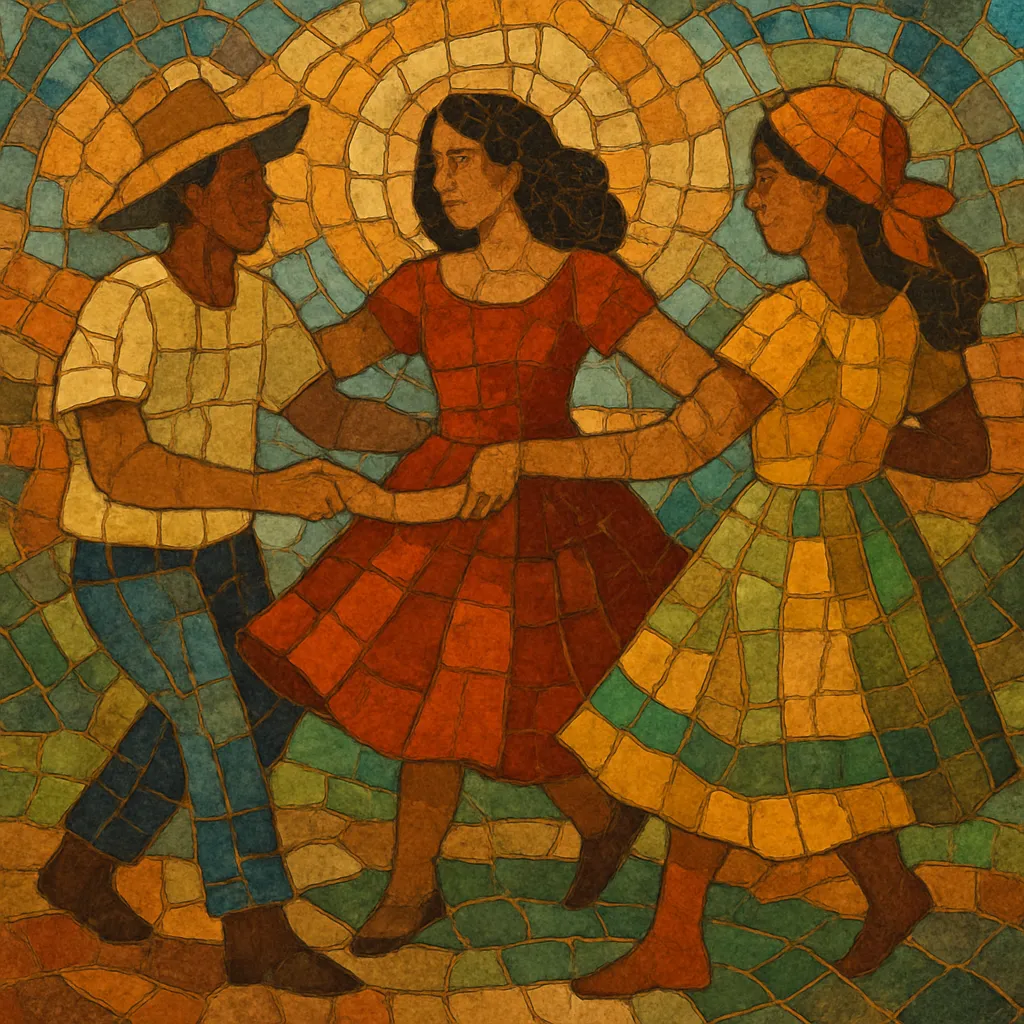Ciranda is a coastal folk music and circle dance from Pernambuco, Brazil, rooted in fishing communities and beach gatherings around Recife and the island of Itamaracá. Participants hold hands and move in a large circle (or concentric circles), while a leader (mestre/cirandeiro) guides the singing in call-and-response.
Musically, ciranda is percussion-driven, typically in a moderate 4/4 pulse with a lilting, swaying groove suited to collective dancing. The repertoire features memorable refrains, communal choruses, and simple, singable melodies supported by basic harmonic movement (often I–IV–V). Lyrics speak to the sea, local life, love, and community traditions, emphasizing inclusivity and participation.
Ciranda emerged along the beaches and fishing communities of Pernambuco—especially around Recife and Itamaracá—where collective circle dances, communal singing, and percussion were central to social life. Its roots reflect a blend of Afro-Brazilian drumming practices, Portuguese circle-dance traditions, and broader Brazilian folk song, coalescing in the early 20th century into a recognizable style tied to local festivities and seaside gatherings.
By the mid-1900s, local masters (mestres) organized groups, formalized repertoires, and created signature songs that spread by word of mouth and community performance. Percussion ensembles and a strong call-and-response format helped standardize the sound and dance, while the circle format made it accessible to all ages.
From the 1960s onward, artists and folklorists began documenting and recording ciranda, bringing it from beaches and neighborhoods to stages and festivals. The international rise of Pernambuco’s music scene later shone a spotlight on ciranda, with iconic figures like Lia de Itamaracá becoming cultural ambassadors and helping the genre reach national and global audiences.
Today, ciranda remains a living, participatory tradition performed at community events, cultural centers, and festivals. While many groups maintain traditional percussion-led arrangements, others incorporate guitar, accordion, and contemporary production, keeping the dance’s social core intact while exploring new textures.


